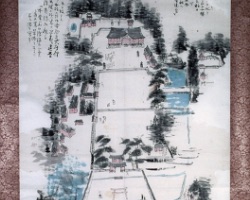What is Ouchi Culture?
- ホーム
- What is Ouchi Culture?
Ouchi Culture is a richly international culture born from the fusion of Kyoto Culture and continental culture.
History of Yamaguchi
Yamaguchi’s Geography: Facilitating a Transportation Hub
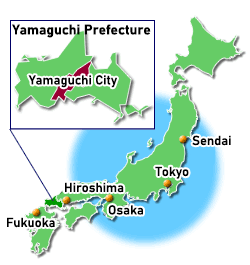
Moreover, Yamaguchi was historically an overland transportation hub, with several overland routes to the Seto Inland and San’in regions intersecting in the area, including the Hiju Kaido Highway (linking Yamaguchi and the port town of Hiju on the Sea of Japan Coast) and the Sekishu Kaido Highway (linking Iwami Province and Suo Province).
In addition, the rivers flowing from the Chugoku Mountains in the Yamaguchi’s north to the Seto Inland Sea have created an alluvial fan, providing a production bases, and manor houses (agricultural farms) were established around this area.
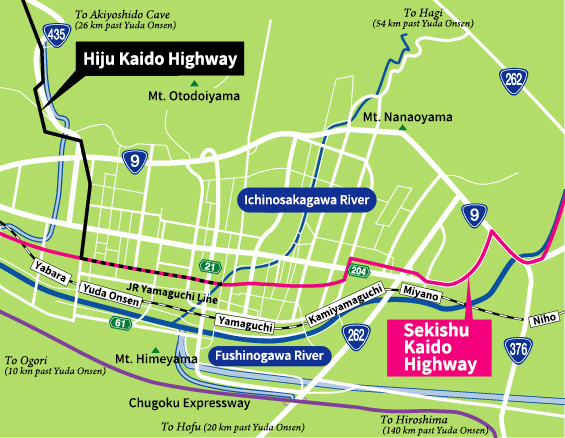
“Kyoto of the West”: Yamaguchi
According to the “Ancient Map of Yamaguchi” (Yamaguchi Prefectural Archives collection), around 1360, the then-head of the Ouchi clan, Ouchi Hiroyo (1325-1380), relocated from the clan’s historical home of Ouchi to Yamaguchi, where he is said to have created a city modeled on the then-capital city of Kyoto. Building his new residence in the Yamaguchi’s center, Hiroyo incorporated various aspects of Kyoto’s elegant style into his city planning, laying out the city streets in a grid-like pattern and adding the names of main thoroughfares and lanes to district names. He also brought the deities of Kyoto’s Gion Shrine and Kitano Tenjin Shrines to Yamaguchi.
Moreover, Yamaguchi resembles Kyoto in that it is has the ideal topography for the four Taoist gods (surrounded by mountains on three sides to the east, north, and west and bordered by plains and rivers to the south), and the Ichinosakagawa River flowing through the city’s center is said to have been likened to Kyoto’s Kamogawa River.
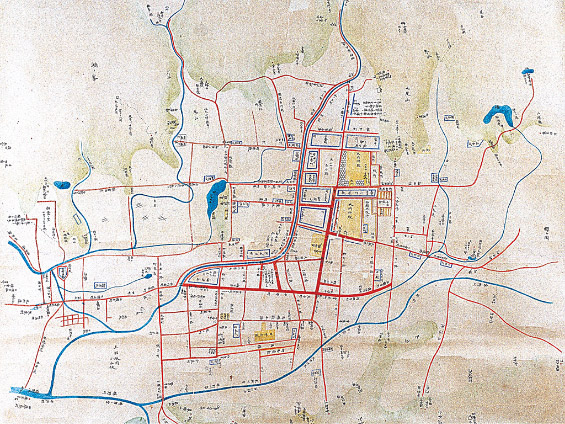
Culture in the Days of the Ouchi Clan
Characteristics of the Ouchi Clan
Tremendously influential in trade and international relations throughout the East Asian region during the 15th to 16th centuries, the Ouchi Clan placed themselves under the umbrella of the Muromachi Shogunate for protection while at the same time actively cultivating friendly ties with foreign powers such as Korea’s Joseon Dynasty, China’s Ming Dynasty, and the Ryukyu Kingdom, emphasizing that they were the descendants of the Kudara no Konikishi Clan (which was founded by a son of the last king of the Baekje Kingdom in southwestern Korea).
The Ouchi Clan held a unique position in that they were deeply involved with both Japan’s national order under the emperor and shogun and the international order of the East Asia region under the Ming emperor.
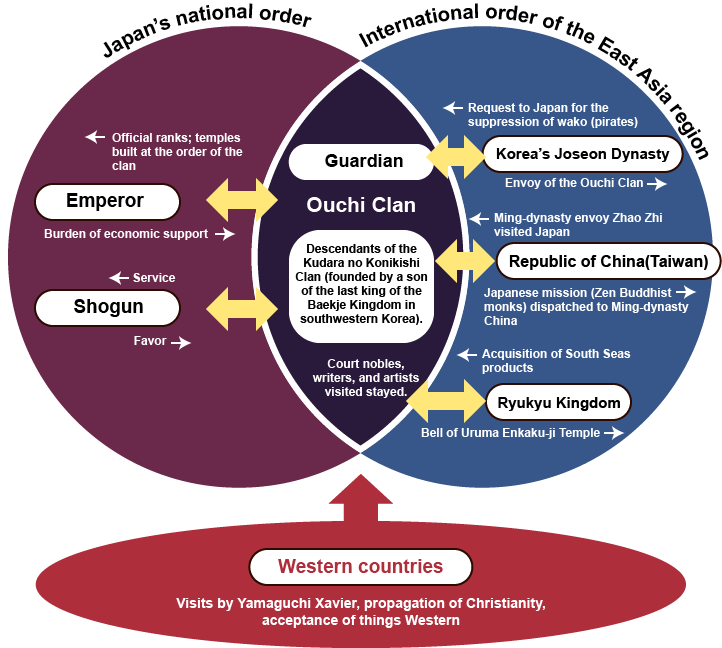
Ouchi Cultural Heritage
With the area having become home to the Ouchi Clan, an internationally rich culture—Ouchi Culture—blossomed in Yamaguchi, reflecting the unique characteristics of Lord Ouchi and his family. Ouchi Culture comprises three elements: Kyoto elements, continental elements, and original elements created through the fusion of Kyoto and continental elements.
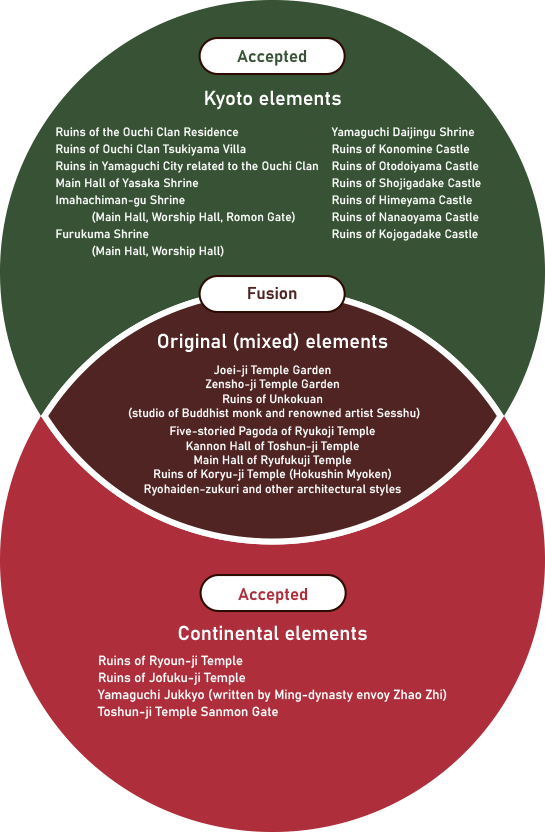
Cultural Properties
Cultural properties with Kyoto elements
Remains of the Ouchi Clan Residence
Modeled after the Muromachi Shogun’s residence, the Ouchi Clan Residence had an enormous area exceeding 47,500 m2. The grounds included traditional pond and rock gardens, an enormous number of unglazed earthenware dishes were used each time a ceremony or party was held.
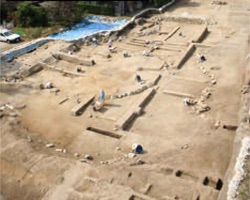
Ruins of Ouchi Clan Tsukiyama Villa
Adjoining the Ouchi Clan Residence, this villa had an area of approx. 11,880 m2 and was visited by many court nobles and men of letters. The poet Sogi praised the villa’s scenery, writing Ike wa umi/Kozue wa natsu no/Miyama ka na? (“The pond is the ocean/perhaps the tree tops lie /deep in the summer mountains?”) The villa is also said to be the birthplace of the koto kumiuta music genre.
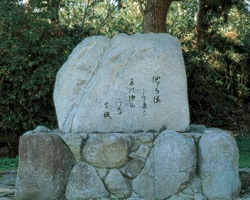
Main Hall of Yasaka Shrine
Legend has it that the Ouchi Hiroyo brought the shrine’s deity to Yamaguchi from Kyoto to be enshrined in this hall, and so the annual Yamaguchi Gion Festival came to be held to commemorate this event. The “Dance of the Heron” is performed ahead of the goshinko (portable shrine dedication) ceremony held on July 20.
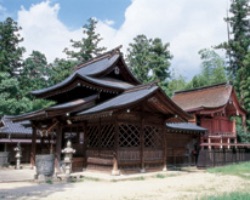
Cultural properties with continental elements
Ruins of Ryoun-ji Temple
Ryoun-ji was the family temple of Ouchi Yoshioki (1477–1529). The enormous stonework measuring approx. 3 m high and 60 m long is thought to be the remains of the temple’s Somon Gate, and attention has been drawn to the similarities between this stonework and Korean Peninsula castle and Gusuku (Ryukyu Islands) stone wall structures.
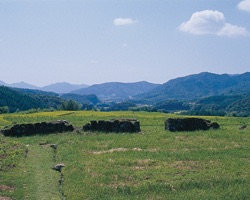
Ruins of Jofuku-ji Temple
Jofuku-ji Temple was established by Ouchi Shigehiro (?–1320), and large numbers of roof tiles featuring dragon and phoenix patterns originating on the Korean Peninsula have been excavated from the temple site, making it highly possible that these tiles were produced using Korean techniques.
Shihonboku Gatansai Jofukuji Karanzu (“Light color on paper image of Jofuku-ji”) (Jofuku-ji Collection) (Prefectural Cultural Property) (Enlarge image.)
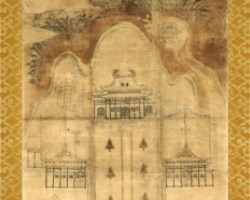
Cultural properties with original elements created through the fusion of Kyoto and continental elements
Five-storied Pagoda of Ryukoji Temple
This pagoda was built by Ouchi Moriakira (1377–1431) for holding memorial services for his elder brother. The Buddhist alter inside the first story where a statue of the Buddha is enshrined is uniquely circular in shape. In the early modern period, there were plans to relocate the pagoda to Hagi, but ultimately remained in Yamaguchi at the fervent request of city residents.
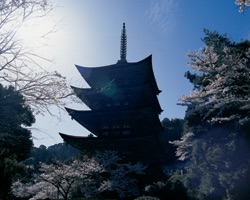
Furukuma Shrine (Main Hall, Worship Hall)
Legend has it that the Ouchi Hiroyo brought the shrine’s deity to Yamaguchi from Kyoto. The shrine buildings feature a unique architectural style, called rohaiden-zukuri, which was used exclusively for structures commissioned by the Ouchi Clan. In this architectural style, the Romon Gate also serves the function of the Worship Hall, and so the structure has floorboards.
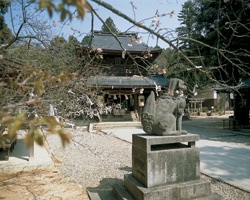
Joei-ji Temple Garden
This garden is thought to have been created by Buddhist monk and renowned artist Sesshu, who has been recognized by UNESCO as a one of the world’s ten greatest persons of culture. Sesshu studied Ming painting styles while an envoy to Ming-dynasty China, and after he returned to Japan based his activities in Yamaguchi, creating many outstanding paintings.
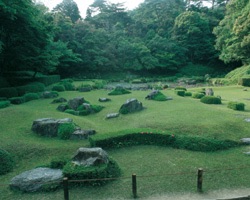
Ruins of Koryu-ji Temple
Koryu-ji Temple prospered as the guardian temple of the Ouchi Clan. The temple bell features an unusual wakankonkosho design that mixes together Japanese and Korean elements.
Image of Koryu-ji Temple (Koryu-ji Temple Collection) (Enlarge image.)
Click on the image to display an enlarged image.
